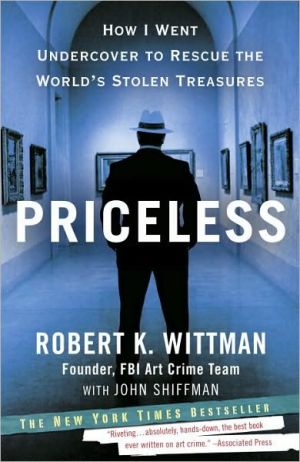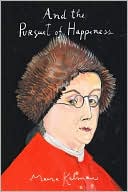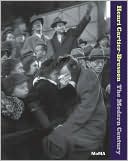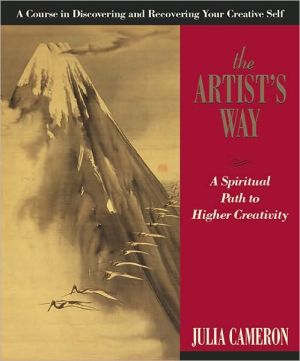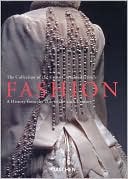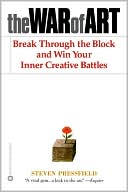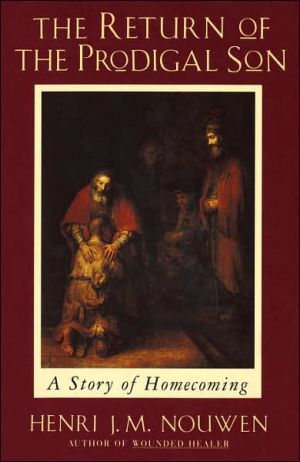Priceless: How I Went Undercover to Rescue the World's Stolen Treasures
The Wall Street Journal called him “a living legend.” The London Times dubbed him “the most famous art detective in the world.”\ \ In Priceless, Robert K. Wittman, the founder of the FBI’s Art Crime Team, pulls back the curtain on his remarkable career for the first time, offering a real-life international thriller to rival The Thomas Crown Affair. \ \ Rising from humble roots as the son of an antique dealer, Wittman built a twenty-year career that was nothing short of...
Search in google:
The Wall Street Journal called him “a living legend.” The London Times dubbed him “the most famous art detective in the world.” In Priceless, Robert K. Wittman, the founder of the FBI’s Art Crime Team, pulls back the curtain on his remarkable career for the first time, offering a real-life international thriller to rival The Thomas Crown Affair. Rising from humble roots as the son of an antique dealer, Wittman built a twenty-year career that was nothing short of extraordinary. He went undercover, usually unarmed, to catch art thieves, scammers, and black market traders in Paris and Philadelphia, Rio and Santa Fe, Miami and Madrid. In this page-turning memoir, Wittman fascinates with the stories behind his recoveries of priceless art and antiquities: The golden armor of an ancient Peruvian warrior king. The Rodin sculpture that inspired the Impressionist movement. The headdress Geronimo wore at his final Pow-Wow. The rare Civil War battle flag carried into battle by one of the nation’s first African-American regiments. The breadth of Wittman’s exploits is unmatched: He traveled the world to rescue paintings by Rockwell and Rembrandt, Pissarro, Monet and Picasso, often working undercover overseas at the whim of foreign governments. Closer to home, he recovered an original copy of the Bill of Rights and cracked the scam that rocked the PBS series Antiques Roadshow. By the FBI’s accounting, Wittman saved hundreds of millions of dollars worth of art and antiquities. He says the statistic isn’t important. After all, who’s to say what is worth more —a Rembrandt self-portrait or an American flag carried into battle? They're both priceless. The art thieves and scammers Wittman caught run the gamut from rich to poor, smart to foolish, organized criminals to desperate loners. The smuggler who brought him a looted 6th-century treasure turned out to be a high-ranking diplomat. The appraiser who stole countless heirlooms from war heroes’ descendants was a slick, aristocratic con man. The museum janitor who made off with locks of George Washington's hair just wanted to make a few extra bucks, figuring no one would miss what he’d filched. In his final case, Wittman called on every bit of knowledge and experience in his arsenal to take on his greatest challenge: working undercover to track the vicious criminals behind what might be the most audacious art theft of all. The Washington Post - Sarah HalzackAlmost every case [Wittman] recounts has enough intrigue and suspense for a Hollywood screenplay…Less exciting but no less interesting are the details of how this former salesman and journalist fell into such a unique job and came to excel at it.
\ Sarah HalzackAlmost every case [Wittman] recounts has enough intrigue and suspense for a Hollywood screenplay…Less exciting but no less interesting are the details of how this former salesman and journalist fell into such a unique job and came to excel at it.\ —The Washington Post\ \ \ \ \ Publishers WeeklyFormer FBI agent Wittman, who created the agency's Art Crime Team and pursued a lifelong interest in antiques and collectibles, goes undercover to hobnob with infamous art thieves. The ineffective, the stupid, the clever, and the dangerous; Wittman befriends them all, in order to betray them, a fact that causes him a certain amount of angst. Among other challenges are bumbling agency bureaucrats and government turf wars when attempting to recover stolen art abroad. A fatal car accident that Wittman was involved in early in his career shaped his perspective: "I understood that because someone made a mistake in judgment, it didn't make him evil. My newfound ability to see both sides of a situation--to think and feel like the accused--was invaluable." Wittman keeps the narrative interesting, and reveals himself as something of a renegade: "Under the FBI's strict undercover rules, you're only supposed to work one case at a time. I never followed that rule." Keep the lies to a minimum, he advises, and avoid working in your home town. (June)\ \ \ Library JournalThe theft and retrieval of priceless works of art, historic documents, or artifacts can be a Herculean law enforcement challenge. With the creation of the FBI's Art Crime Team—led by 20-year veteran special agent Wittman—the reader enters a clandestine world of criminal activities of epic proportion. Writing with investigative reporter Shiffman, Wittman unfurls a web of intrigue and danger in this rare glimpse into high-level detective work that has resulted in the retrieval of more than $225 million worth of stolen artwork and documents in the past two decades. One of the recent cases solved by the Art Crime Team was the return of one of 14 original copies of the Bill of Rights taken by Union soldiers at the end of the American Civil War (this is depicted in full in David Howard's Lost Rights: The Misadventures of a Stolen American Relic). Wittman's successes as an undercover agent, extensive training in the world of art, and skill as a lead detective and investigator are well documented in this autobiography. VERDICT An essential read for those interested in art history and law enforcement.—Claire Franek, MSLS, Brockport, NY\ \ \ \ \ Kirkus ReviewsEntertaining, surprisingly informative memoir of an FBI agent who specialized in art thefts. A dozen Scotland Yard agents deal with this massive, multibillion-dollar global problem. The French national police employ 30 agents, Italy even more. Since Wittman's retirement, the FBI employs no one. With the assistance of Philadelphia Inquirer investigative reporter Shiffman, the author recounts an eventful career as the FBI's sole art-crime specialist. He often worked undercover to trap criminals who, despite Hollywood's romance with art thieves, tend to be lowbrow and thuggish. No intellectual or art lover, Wittman began his career in Philadelphia in 1988; almost immediately, thieves struck two major museums. With luck, tips from informants and hard work-always superior to genius in tracking stolen art-he helped recover priceless Oriental antiques and a Rodin statue. His interest aroused, Wittman took art classes, although at the time art theft was not even a federal offense. This changed after 1990 when thieves stole $500 million worth of artifacts from Boston's Isabella Gardner Museum, the greatest property crime in American history. The author writes about several years of tortuous undercover work ingratiating himself with international mobsters who claimed to have the paintings. The investigation eventually fizzled, but police recovered several other stolen paintings. Readers will learn the mechanics of undercover work complicated by FBI superiors who were often as self-important and obstructive as the suspects. The digressions into art and art history are distracting, but crime buffs will receive a painless education while they enjoy a lively account of art thieves and the man who pursued them. Author tour to Washington, D.C., Boston, Philadelphia\ \
